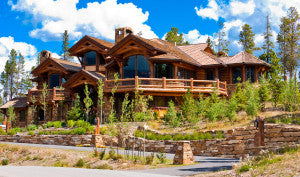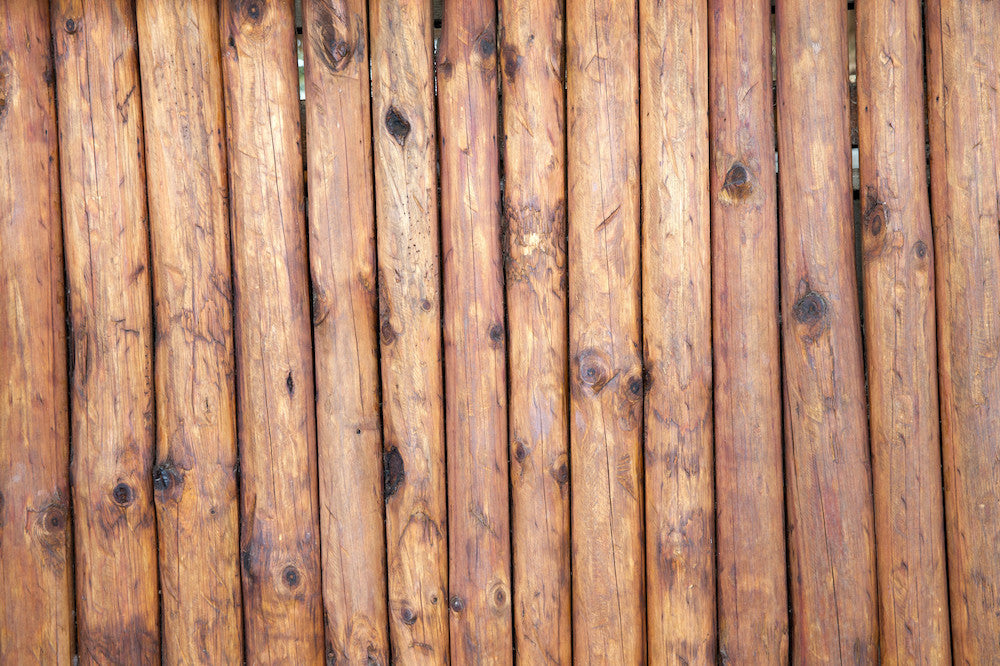Cleaning the Exterior of Your Log Home

It’s your dream come true, your reward for all your hard work, your oasis in the midst of a world filled with deadlines, demands, expectations, pressures and traffic jams—it’s your log-home and the solitude it provides for you and your entire family.
If you’re like most log-home owners, you’ll want it to keep this precious asset in pristine condition for a long time. And why wouldn’t you?
Chances are, your log-home is the biggest investment you will have ever made in your lifetime and making sure its condition is maintained as well as ensuring your home serves you well, is crucial.
Cleaning your logs should be a regular regime that continues like clockwork at regular intervals every year. Let’s take a look at how to cleaning the exterior of your log home works.
Log-Wash to Clean
Once the logs are assembled at your building site, they need to be cleaned with a specialized log-wash cleaner to remove all traces of mill-glaze, dust, mud and any other expected contaminants.
Log washes can be used as a maintenance cleaner or to prepare the surface of wood for a new coat of stain or topcoat. Always remember to apply cleaning solutions from the bottom of the walls going upward to prevent any possible streaking that might occur.
Many log washes must remain wet to work effectively; so the best approach is to wet down the wall with water mist from your garden hose, apply the log-wash solution and work an area that is limited so the wash remains on the wall for no more than 10 minutes.
You’ll gently scrub the wall with a soft-bristled brush and use the mist setting on your hose, once again, to rinse. When rinsing, you’ll start from top and work downward. Rinse a second time even if you think the log-wash has been thoroughly removed. Any residual cleaning solution left behind will hinder the adherence of stains and other finishing products.
Bleach to Brighten
Assuming your logs that have been stripped of its old stain and top-coat, a mild bleach solution works well for logs that show signs of possible mildew development. Bleach shouldn’t take the place of a log-wash (which cleans but does not brighten) to remove stains or dirt, but when combined with 1-part bleach and 4-parts water, it will work well to brighten your logs and kill any harbored mold or mildew.
It should be stated, however, that bleach solutions that are too concentrated can remove the natural color of the wood, damage the wood fiber and cause iron-tannate stains that are very challenging to remove. If you wish to brighten your logs and are hesitant to use any kind of bleach, there are wood-restore products on the market that will successfully brighten your logs.
Power or Pressure Washing to Clean
It’s true that different opinions abound concerning the ultimate effects of power-washing but in the end, there seems to be no uniform answer as to whether or not power-washing should be recommended—it’s a personal choice.
Power washing would, certainly, be the quickest method and produces impeccable results. If you do choose power washing, any and all gaps will need to be filled to prevent any water seepage. The setting on the pressure washer can be set from 500-1000 psi to remove graying; and more psi can be used for deeper cleaning. A force beyond a 1500 psi can increase the chances of fuzzing the wood that would need to be sanded or buffed off.
Determining if Stains are Mold/Mildew, Tannin or Blue Stain
If you notice blackening, you could have mold/mildew, tannin stains or what is called blue stain under the logs’ staining and topcoat products. The only way to remove these eye sores is to remove the stain product and topcoat and get down to bare wood.
Tannin stains are water-soluble chemicals in wood that are brought to the surface. Tannins don’t pose a threat to the wood but, simply, look unattractive.
Blue stain is evident in wood that was insect-infested prior to being used for logs for construction. They, too, do not affect the integrity of the wood but just appear unsightly.
To determine which of the three stains your logs might have, take a test patch of log and use a cotton tip to apply a small amount of pure bleach onto the blackened area. If the affected area shows a removal of the blackened color, you have mold or mildew. If the blackened stain remains unaffected, you’ll have tannin or blue stain.
Tannin and blue stain can be at least partially removed by using a medical-grade of hydrogen peroxide—it will be 35% concentration.
Keeping the exterior logs of your log home clean and healthy is of prime importance! You log-home will last for generations when it receives the TLC it deserves!





